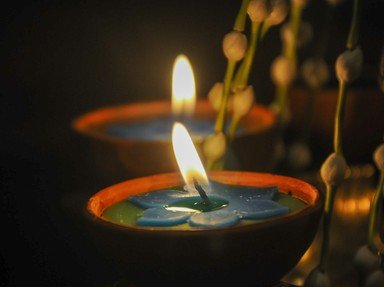Quiz Answer Key and Fun Facts
1. Lutherans never use prayer beads.
2. Prayer beads are always made of round glass beads.
3. How many beads are on a standard Catholic rosary?
4. There exists an object called a Pater Noster. What is it?
5. A set of Tibetan Buddhist prayer beads is called a _____.
6. Eastern Orthodox Christians and Eastern Catholics use a prayer rope called ________.
7. The earliest known form of prayer bead is the ___________.
8. Islamic prayer beads are called _____.
9. Celtic, Greek, Egyptian, Classic Wiccan, Healing and Death prayer beads are types belonging to which religious group(s)?
10. There are non-denominational prayer beads.
Source: Author
Zbeckabee
This quiz was reviewed by FunTrivia editor
CellarDoor before going online.
Any errors found in FunTrivia content are routinely corrected through our feedback system.

